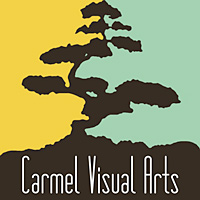Here is a list of suggested materials for the workshop. My palette is comprised almost entirely of Daniel Smith brand watercolors. I realize it can be pricey to purchase watercolor paint. But if you plan to continue to do watercolors, DS pigments are worth the additional expense. Because they are heavily pigmented, a tube lasts much longer than most other brands. If you are coming with a friend, consider sharing an order. At a minimum, bring colors that correspond with the colors in boldface, whether they are DS or not. I have noted some non-DS options.
Paints
These are the colors on my palette and most will be used in demonstrations and exercises. The pigments that will be used the most are in boldface. Daniel Smith watercolors can be purchased at their online store or Blick’s online store. Check the Daniel Smith website for retail outlets near you.
Greens
(optional for this workshop)
- Viridian
- Phthalo Green -Yellow Shade (notPhthalo Yellow Green)
- Non-DS options: Winsor Green, any Phthalo Green
Yellows
A good quality yellow (I don’t use yellow, so bring one if you want to use it)
- Quinacridone Gold
- Non-DS option: Raw Sienna
Oranges and Reds
(I strongly recommend you get the quinacridone colors)
- Quinacridone Burnt Scarlet and Quinacridone Burnt Orange
- Non-DS option: Burnt Sienna
- Carmine
- Permanent Orange
- Non-DS option: Cadmium Orange
- Organic Vermilion
- Non-DS option: Cadmium Red
Blues
- Ultramarine Blue(I use Holbein instead)
- Cobalt Blue
- Cerulean Blue (I prefer DS Cerulean Chromium)
- Cobalt Turquoise (the hue of this pigment varies greatly; I prefer the DS version)
Other
- Sepia (I prefer Winsor & Newton)
- Payne’s Gray
Brushes
- Bring your favorite brushes. I recommend rounds sizes 8-12 and squirrel mops sizes 2–6. 2-3 brushes within this range will be fine. They needn’t be sable but should have a good water reservoir and good points. I will be using a #12 and #14 Silver Black Velvet hybrid synthetic mop and a #12 Escoda Perla synthetic in my demonstrations.
Paper
- It is most economical to bring individual sheets and tape them to a board. You must bring your own board and masking tape if you choose this option (quarter sheets will be fine-divide a 22 x 30 sheet in 4)) I use Saunders Waterford, 140 lb. Cold Press or Rough.
- Other brands such as Fabriano or Lanaquarelle are okay, as long as they are cold press or rough. Strathmore is not okay. The paper must be good quality watercolor paper regardless of brand. You may also want to use watercolor blocks for convenience.
- I also no longer recommend Arches. The paper has sizing issues that result in splotchy washes. Arches from four years ago or older should be fine, however.
Palette
- An inexpensive plastic folding palette works fine. It should have several empty wells for the above-mentioned colors and fold in half to preserve your paints ($3-6.00 at Blicks). If you have a clean palette, organize your paints by color, putting all the reds together, the blues together, etc. Label them or make a diagram in your sketchbook. You will forget otherwise.
Water
- Bring water containers. I use an old mineral water bottle for clean water. I use two old yogurt containers as water containers.
Easel
- If you’re more comfortable working at an easel, please bring it.
Pencil and Sketchbook
- Last but definitely not least, please bring a small sketchbook and pencil. I prefer a 2B mechanical pencil, but the choice is yours. Soft pencils work best for thumbnail sketches. We will be doing value sketches prior to each painting.
Reference Photos
- We will be working from photos. Please bring photos that you would like to use, including those with green landscape features, water elements, or simple architectural scenes (or more complicated ones if you are very comfortable with perspective). These photos can be digital or prints. Please try not to use your phones as a screen. The screens are too small.



